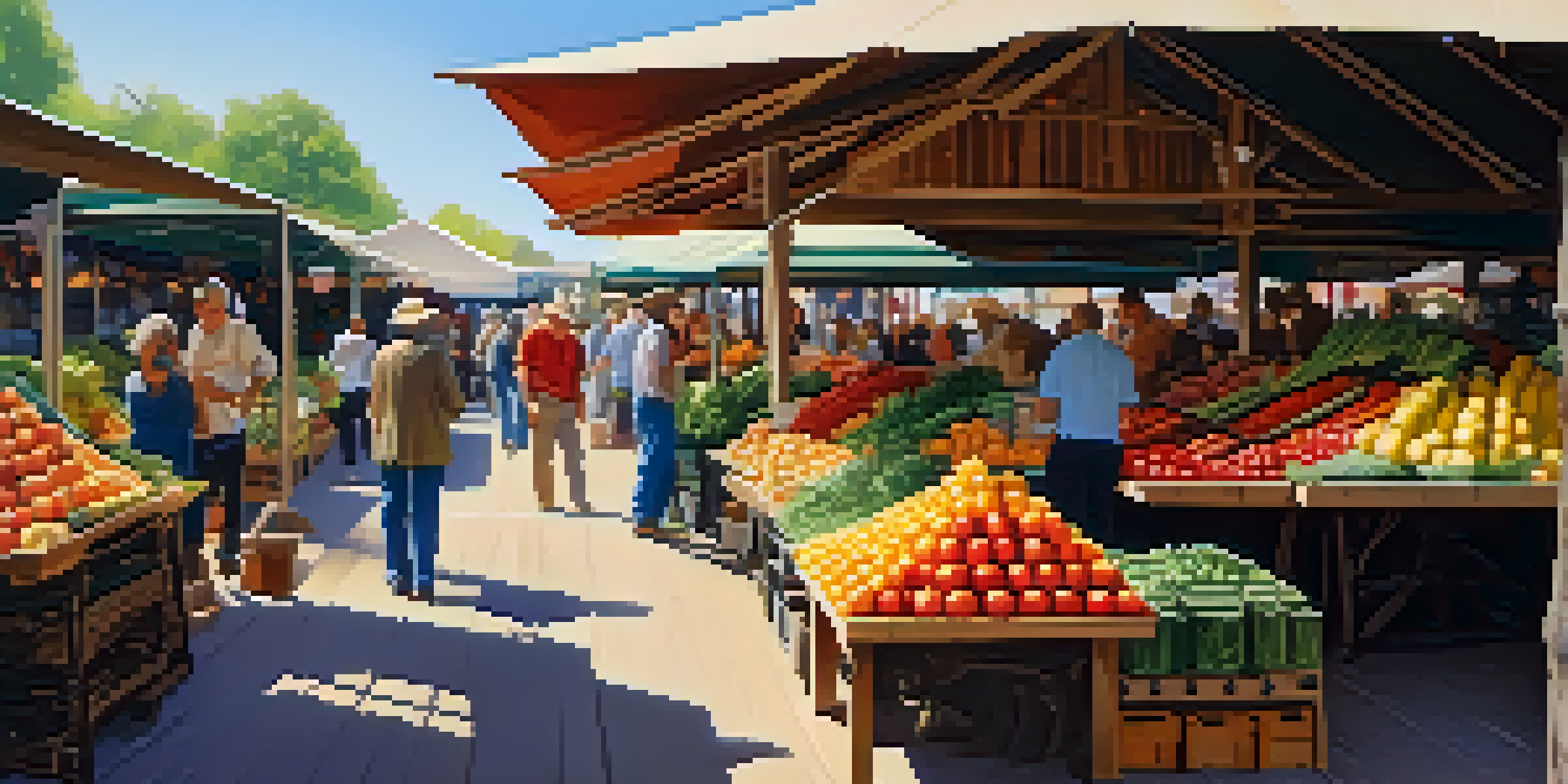The Role of Local Farms in California's Culinary Scene

The Foundation of Farm-to-Table Dining in California
California has long been a pioneer in the farm-to-table movement, and local farms play a crucial role in this culinary philosophy. By sourcing ingredients directly from local growers, chefs are able to create dishes that are fresh, flavorful, and sustainable. This connection not only enhances the quality of the food but also supports the local economy, allowing farmers to thrive.
Farm-to-table is not just a trend; it's a way to connect with the land and the people who grow our food.
When chefs visit local farms, they often discover seasonal produce that inspires their menus. For instance, a chef might visit a farm in the Central Valley and find vibrant heirloom tomatoes, leading to a new summer salad creation. This dynamic relationship between farmers and chefs fosters creativity and innovation in the kitchen, elevating California's culinary offerings.
Moreover, dining at farm-to-table restaurants allows patrons to experience the rich agricultural diversity of California. Whether it's a meal featuring fresh avocados from San Diego or artisanal cheeses from Sonoma, guests enjoy a taste of the region's bounty, creating a deeper appreciation for local food systems.
Supporting Sustainability Through Local Sourcing
One of the standout benefits of local farms is their commitment to sustainable practices. Many California farms focus on organic farming methods, reducing the use of harmful pesticides and promoting biodiversity. This not only benefits the environment but also results in healthier food options for consumers.

By sourcing ingredients from local farms, restaurants can significantly reduce their carbon footprint. Food transportation contributes to greenhouse gas emissions, but when chefs buy directly from nearby producers, they minimize travel distances. This eco-friendly approach resonates with environmentally conscious diners who prefer to support sustainable practices.
Farm-to-Table Boosts Local Economy
By sourcing ingredients directly from local farms, chefs enhance food quality and support the local economy.
Additionally, local farms often engage in community-supported agriculture (CSA) programs, creating a direct link between consumers and their food sources. These programs not only provide fresh produce to local households but also educate consumers about seasonal eating and the importance of supporting local agriculture.
Celebrating Regional Flavors and Culinary Diversity
California's culinary scene is a melting pot of flavors, thanks in part to its diverse agricultural landscape. Local farms produce a wide array of fruits, vegetables, grains, and proteins that reflect the state's rich cultural heritage. This variety enables chefs to experiment with different cuisines and create unique dishes that celebrate regional flavors.
Supporting local farms is essential to building a sustainable food system that benefits everyone.
For instance, the abundance of fresh citrus from the Central Valley can inspire a chef to craft a zesty Thai-inspired marinade, while the availability of heirloom beans from local farms might lead to a comforting Italian cassoulet. Chefs can play with these ingredients, honoring traditions while also putting their own spin on classic recipes.
This culinary diversity not only attracts food enthusiasts but also fosters a sense of community. Local food festivals and farmers' markets provide platforms for chefs to showcase their dishes, encouraging collaboration and creativity among culinary professionals.
The Role of Farmers' Markets in Culinary Connections
Farmers' markets serve as vibrant hubs where local farms meet consumers and chefs alike. These markets are not only a source of fresh produce but also a space for culinary exploration and connection. Chefs often visit farmers' markets to discover new ingredients and build relationships with local growers.
At these markets, farmers can share their stories, educate consumers about their farming practices, and offer samples of their produce. This direct interaction creates a sense of trust and transparency, allowing diners to feel more connected to the food they eat. When chefs highlight these local ingredients on their menus, it strengthens the farm-to-table narrative.
Sustainability Through Local Sourcing
Local farms prioritize sustainable practices, reducing carbon footprints and providing healthier food options.
Furthermore, farmers' markets play a crucial role in supporting local economies by promoting small-scale agriculture. By purchasing directly from farmers, chefs contribute to the sustainability of these businesses, ensuring that they can continue to provide fresh, high-quality ingredients.
Innovative Collaborations Between Chefs and Farmers
The relationship between chefs and farmers often goes beyond simple sourcing; it evolves into innovative collaborations that push culinary boundaries. Many chefs work closely with farmers to develop new varieties of crops or unique flavors that can enhance their dishes. This collaborative spirit fosters an environment of experimentation and creativity.
For example, a chef might partner with a farmer to cultivate a rare heirloom vegetable specifically for their restaurant. This not only provides the chef with a unique ingredient but also allows the farmer to showcase their expertise and attract new customers. Such partnerships create a win-win situation, benefiting both parties while delighting diners.
These collaborations also extend to events like farm dinners, where chefs prepare meals on-site at the farm. These immersive experiences allow diners to connect with their food sources on a deeper level, creating lasting memories and fostering a greater appreciation for local agriculture.
Community Engagement and Educational Opportunities
Local farms often engage with their communities through educational programs, workshops, and events. These initiatives not only raise awareness about sustainable farming practices but also inspire a new generation of food enthusiasts. From farm tours to cooking classes, these experiences help bridge the gap between consumers and their food sources.
Many chefs participate in these educational efforts, sharing their culinary knowledge and promoting the importance of using local ingredients. By collaborating with local farms on educational initiatives, they help cultivate a deeper understanding of food systems and the impact of sourcing locally.
Culinary Diversity Celebrated in CA
California's rich agricultural landscape enables chefs to create unique dishes that reflect the state's diverse cultural heritage.
Additionally, these community engagements often lead to stronger connections between chefs, farmers, and consumers. As people become more knowledgeable about where their food comes from, they are more likely to support local farms and restaurants, creating a vibrant culinary ecosystem.
The Future of Local Farms in California's Culinary Landscape
As the demand for locally sourced ingredients continues to grow, the future of local farms in California's culinary scene looks promising. With increasing awareness of sustainability and health-conscious eating, more chefs are prioritizing local sourcing. This trend not only supports farmers but also enriches the dining experience for patrons.
Moreover, advancements in technology and farming practices are helping local farms thrive amidst challenges like climate change and urban expansion. Innovative practices such as hydroponics and vertical farming are emerging, allowing farmers to maximize space and yield while minimizing environmental impact.

As we look ahead, the collaboration between local farms and the culinary community will likely deepen, resulting in a richer, more diverse food culture. With chefs and farmers working hand in hand, California's culinary landscape will continue to flourish, showcasing the best of what local agriculture has to offer.